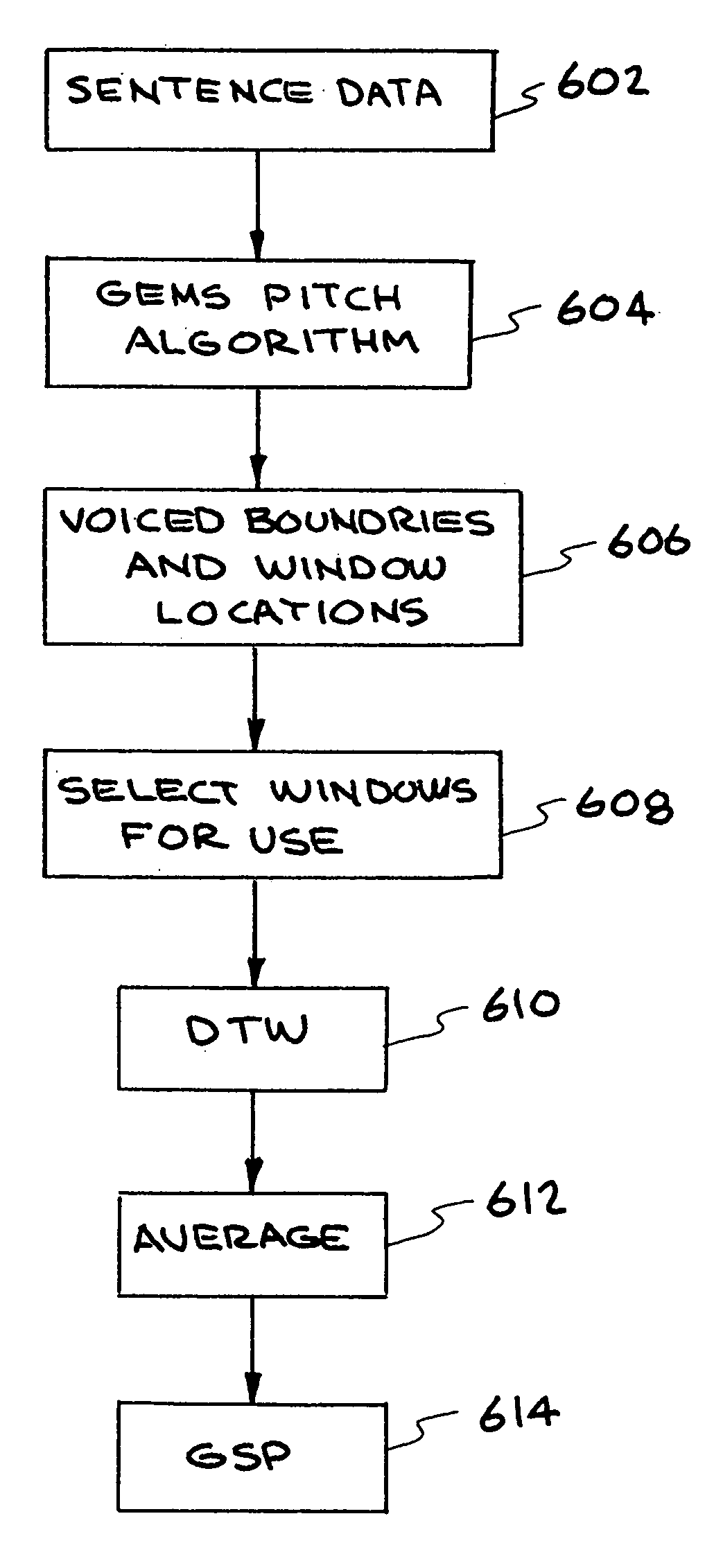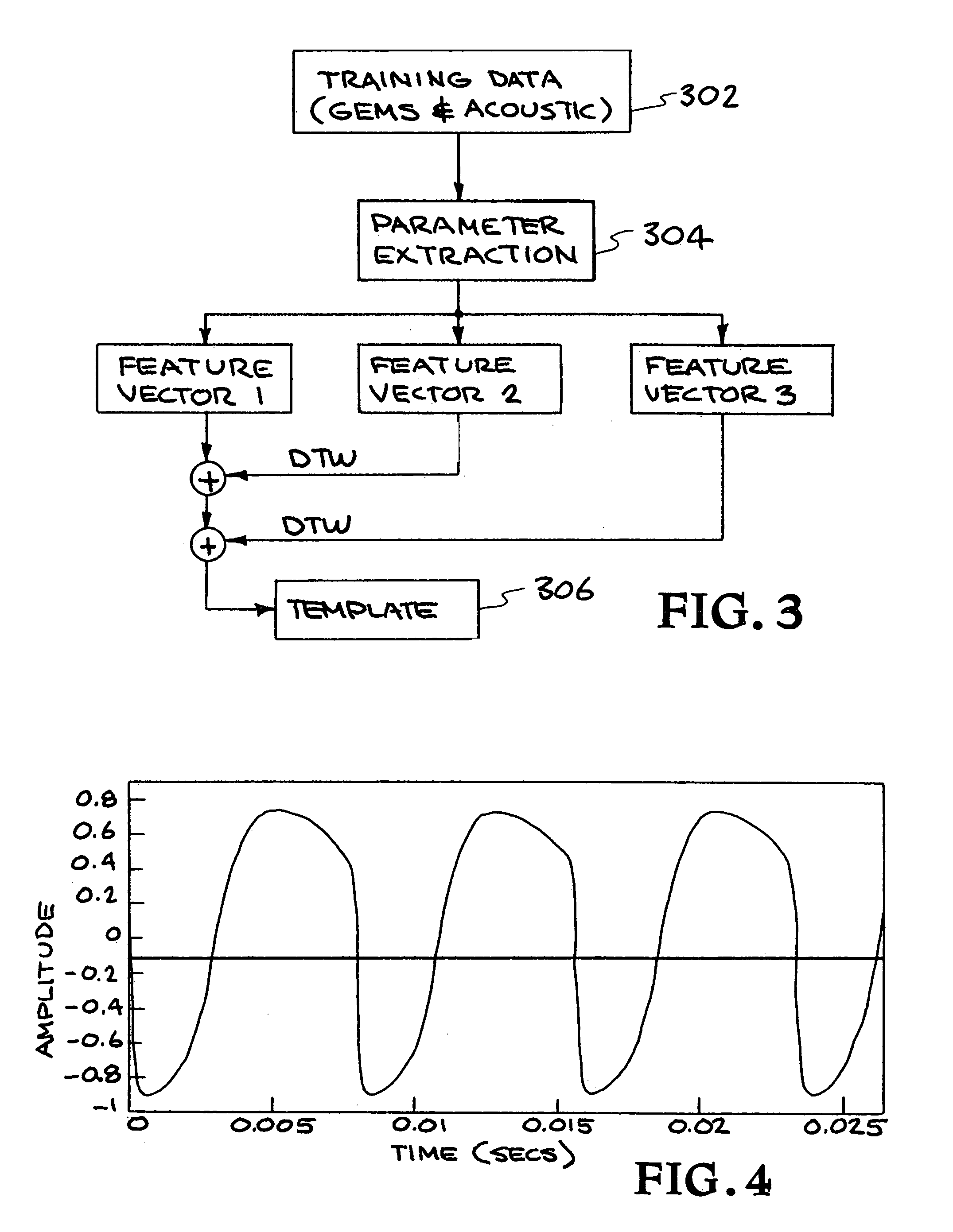Speaker verification system using acoustic data and non-acoustic data
a verification system and acoustic data technology, applied in the field of mathematical methods and electronic systems, can solve problems such as easy noise, and high errors in verification systems
- Summary
- Abstract
- Description
- Claims
- Application Information
AI Technical Summary
Benefits of technology
Problems solved by technology
Method used
Image
Examples
Embodiment Construction
[0026]A speaker verification method and system are described. In various embodiments, non-acoustic data is used to produce parameters characterizing a speaker. In one embodiment, a glottal electromagnetic micropower sensor (GEMS) provides electromagnetic (EM) data that is related to the motions of the tracheal and glottal tissues during speech production. In other embodiments, different non-acoustic data characterizing the speaker is collected using any appropriate equipment. The verification system developed with the EM data includes new and improved features from which the verification decision is based. With the GEMS device, information such as pitch and voicing on / off information is far more accurately and speedily obtained. The EM data also provides features that were previously unobtainable with all-acoustic verification systems. These new verification features lower verification error rates over prior systems, especially in the presence of noise. The EM data is completely imm...
PUM
 Login to View More
Login to View More Abstract
Description
Claims
Application Information
 Login to View More
Login to View More - R&D
- Intellectual Property
- Life Sciences
- Materials
- Tech Scout
- Unparalleled Data Quality
- Higher Quality Content
- 60% Fewer Hallucinations
Browse by: Latest US Patents, China's latest patents, Technical Efficacy Thesaurus, Application Domain, Technology Topic, Popular Technical Reports.
© 2025 PatSnap. All rights reserved.Legal|Privacy policy|Modern Slavery Act Transparency Statement|Sitemap|About US| Contact US: help@patsnap.com



